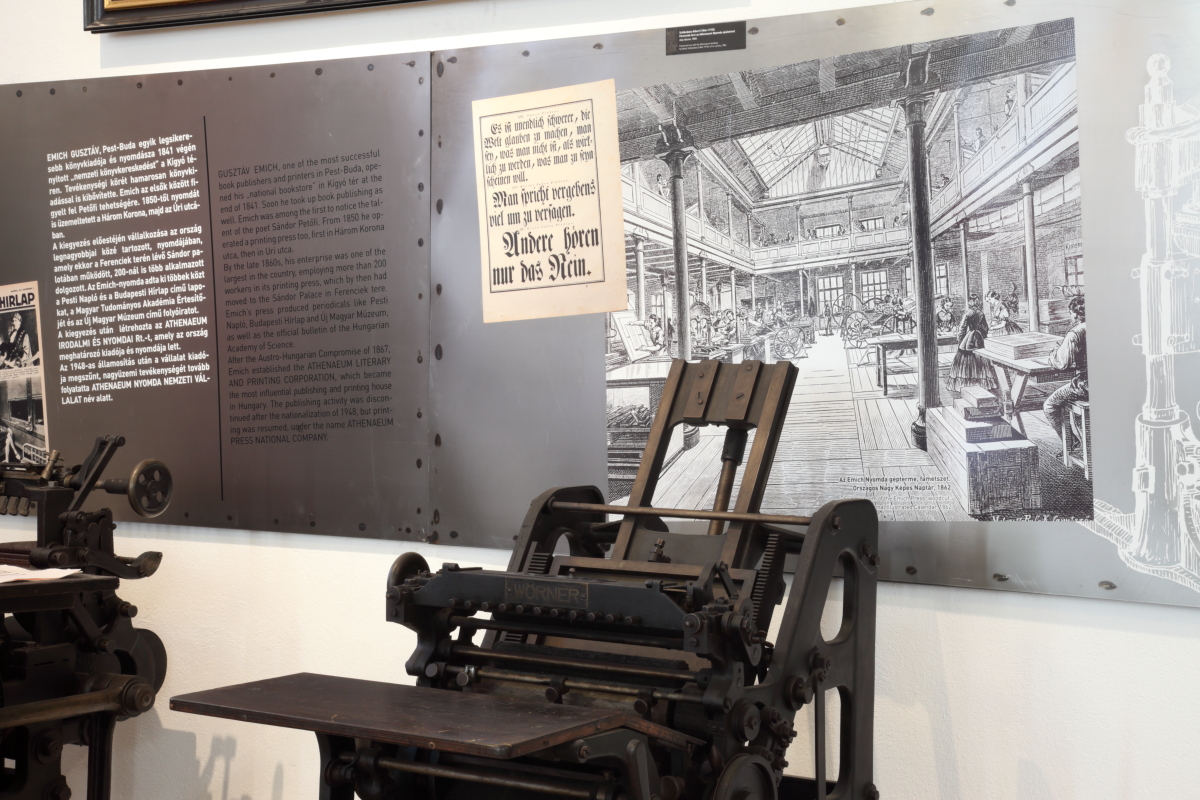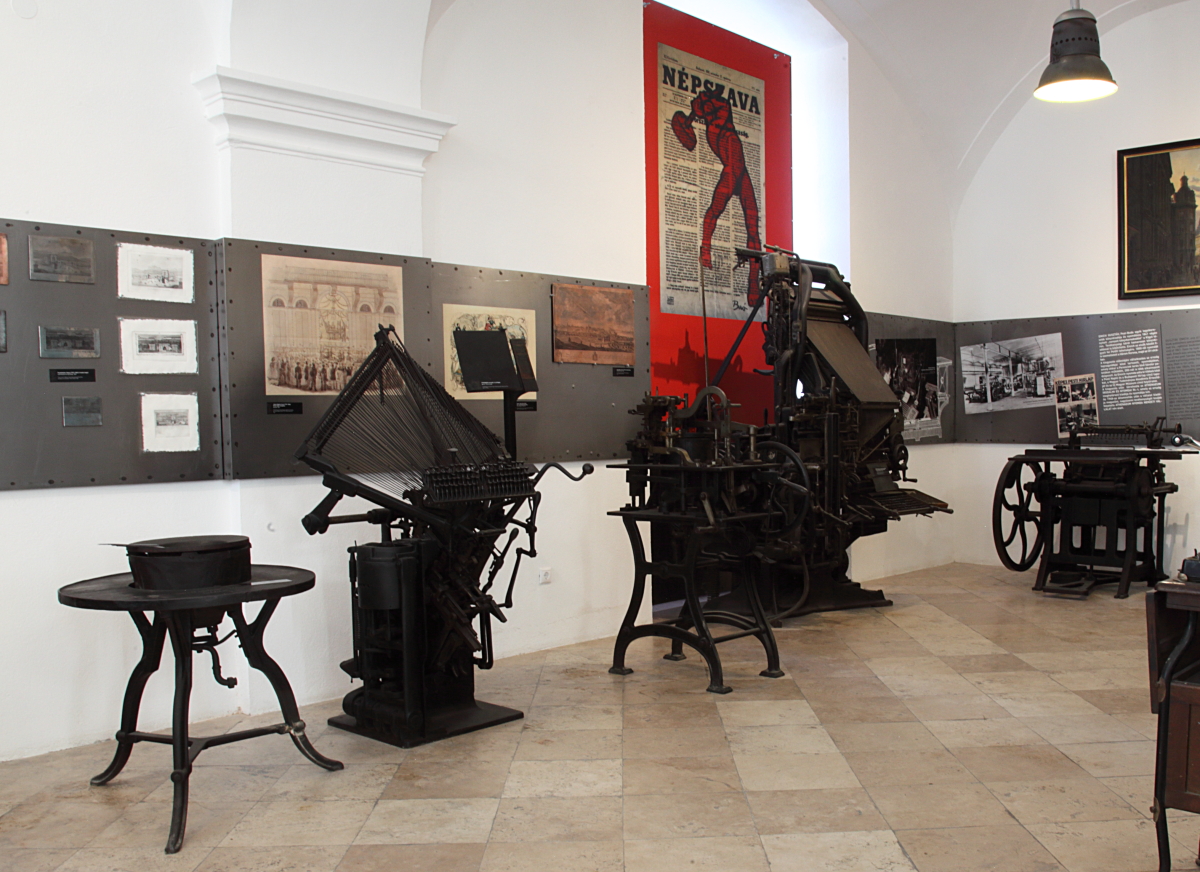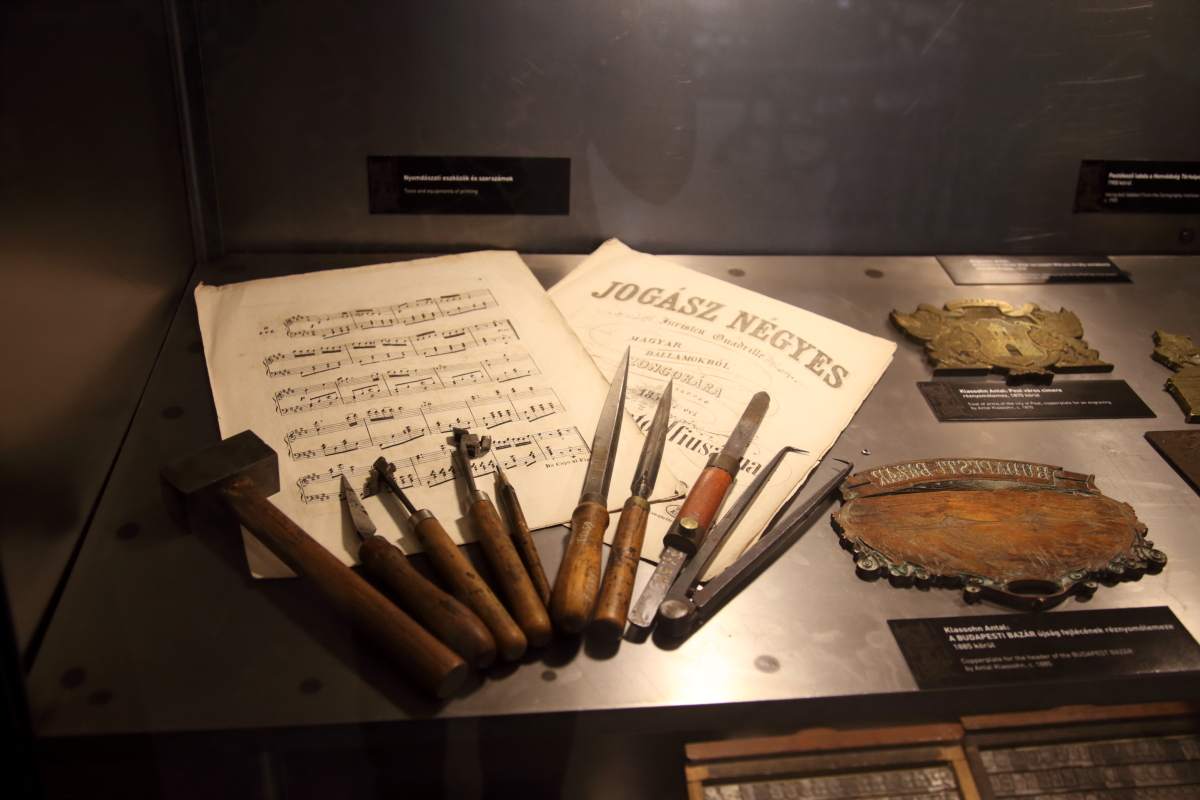- Visitor information
- About us
- Exhibitions
- Temporary Exhibitions
- Permanent Exhibitions
- Past Exhibitions
- 2024/2025 - Life with Honey
- 2024/2025 - WANDERINGS - Lili Ország in Kiscell
- 2024 - Light & City
- 2022 - Gábor Gerhes: THE ATLAS
- 2019/2020 - Shine! - Fashion and Glamour
- 2019 - 1971 – Parallel Nonsynchronism
- 2018 – Your Turn!
- 2018 – Still Life
- 2017 – LAMP!
- 2017 – Tamás Zankó
- 2017 – Separate Ways
- 2017 – Giovanni Hajnal
- 2017 – Image Schema
- 2017 – Miklós Szüts
- 2016 – "Notes: Wartime"
- 2016 – #moszkvater
- 2015 – Corpse in the Basket-Trunk
- 2015 – PAPERwork
- 2015 – Doll Exhibition
- 2014 – Budapest Opera House
- 2013 – Wrap Art
- 2012 – Street Fashion Museum
- 2012 – Riding the Waves
- 2012 – Buda–Pest Horizon
- 2011 – The Modern Flat, 1960
- 2010 – FreeCikli
- 2008 – Drawing Lecture on the Roof
- 2008 – Fashion and Tradition
- 2004 – Mariazell and Hungary
- Virtual museum
- What's happening?
Kiscell Printing House – Chapters from the History of Printing in Budapest
Category:
Omitting a city’s printed publications from a survey of its cultural life would be like ignoring its art or music life. Moreover, printers were always important and knowledgeable actors of urban life owing to their occupation, their cultural openness and organizations from reading circles to choirs, and later through their trade unions and the role they played in socialist-social democratic politics. Such social historical considerations may justify the need and importance of an already existing collection, but the actual collecting work usually begins upon far more practical stimuli.
The first piece of the collection was given to the Municipal Museum of Budapest by archivist Lajos Toldy in 1901: the two-part printing plate of a large image of the Holy Trinity statue of Buda engraved by C.A.Dietell of Vienna in 1712. The next item to be received was perhaps the printing machine that is traditionally known to have played a role in the 1848 revolution. A considerable part of the printing historical collection came to the museum in 1966 when the Printing Trust submitted several old machines, equipment, printing tools. Unfortunately their origins can rarely be clarified, for the Trust had been founded some fifteen years earlier during the wave of nationalization. The Athenaeum Press gave us a valuable gift: the type collection of the old University Press dating from between the 18th century and 1914. We have items from the First Hungarian Type Foundry and the music print-shop. Most recently, in 2012, we received a valuable printing historical material from the liquidated Offset Press. The ensemble of over one thousand items contains 30 printing machines and book-binder’s presses from the 19th and early 20th century, 190 printing plates (copper and steel plated, wood blocks, lithographic stones) from the period between the late 17th and mid-20th centuries, several printer’s and book-binder’s tools, most from around 1900, and quite a few type sets.



Photo: Judit Fáryné Szalatnyay
